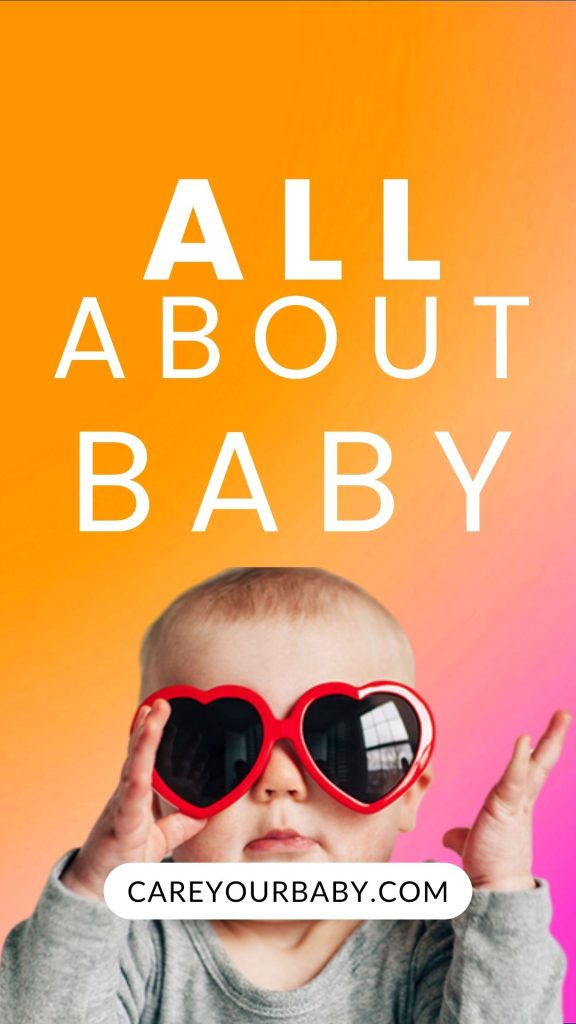When Is the Newborn Phase Over? Navigating Baby Milestones
In the gentle whirlwind of new parenthood, each day can feel like a blend of sleepless nights and joyful discoveries. The newborn phase, with its soft coos and tiny fingers, is a magical time, yet it can also leave parents pondering one question: when does this fleeting stage come to an end? As those precious weeks stroll by, the transition from swaddling to sprawling can feel both subtle and monumental. Understanding when the newborn phase officially concludes is less about ticking off a calendar and more about recognizing the remarkable milestones your baby achieves along the way. From their first smile to the excitement of rolling over, navigating these developmental milestones offers not just a timeline for growth, but a deeper appreciation for the enchanting journey of parenthood. Join us as we explore the signs that signal the end of the newborn phase and celebrate the myriad ways your baby is shaping the world around them, one delightful milestone at a time.
Understanding the Newborn Stage: Key Characteristics and Duration
The newborn stage typically lasts from birth to around two months, marking a period of rapid development and adjustment for both baby and parents. During this phase, infants exhibit several key characteristics that are vital for their growth and bonding. **Reflexes** are strong, with actions like grasping, rooting, and the startle reflex being prominent. **Sleep patterns** are irregular, with babies often sleeping for short periods and waking frequently to feed. Additionally, newborns display remarkable sensitivity to stimuli; their senses are developing, but they may still prefer quiet, calm environments to help manage their new and overwhelming world.
As they progress through this stage, parents may notice distinct shifts in their baby’s behavior and needs. With each passing week, babies begin to show more **awareness of their surroundings** and start to develop a basic **sleep-wake cycle**. Essential milestones, like social engagement and visual tracking, become more evident as newborns start to make eye contact and respond to sounds. To better understand these transformations, refer to the following table capturing typical newborn milestones:
| Milestone | Typical Age Range |
|---|---|
| Reflexes (grasp, rooting) | 0-2 months |
| Eye contact | 4-6 weeks |
| Social smiles | 6-8 weeks |
| Tracking objects with eyes | 6-8 weeks |
Recognizing Developmental Milestones: When Does Newborn Transition Begin?
As your little one begins to grow, you’ll notice a fascinating array of developmental milestones that mark their transition from the newborn phase. Typically, this journey starts around the end of the first month and can last through the first year. During this period, you can expect to see significant changes in their reflexes, motor skills, and sensory exploration. These milestones are not just mere benchmarks; they represent crucial steps in their development, setting the stage for more complex skills to blossom as they continue to grow.
Pay attention to these key markers that signal the end of the newborn stage and the onset of early infancy:
- Increased Alertness: Newborns tend to sleep most of the time. By two months, they begin to wake up more frequently and engage with their surroundings.
- Head Control: By the end of the first month, some babies may start to lift their heads while lying on their stomachs and can turn their head towards sounds.
- Visual Tracking: As their eyesight develops, they will start to follow moving objects with their eyes by around two months.
- Social Smiling: One of the most heartwarming milestones is the emergence of social smiles, typically around six weeks.
| Milestone | Age Range |
|---|---|
| Increased Alertness | 1-2 months |
| Head Control | 1-3 months |
| Visual Tracking | 2-3 months |
| Social Smiling | 6-8 weeks |
Understanding these milestones can help you better navigate this transformative time. Each baby’s growth timeline may vary, and it’s important to remember that some may achieve these milestones earlier or later than others. However, keeping an eye on these important markers will ensure you can celebrate every small victory with your little one as they gradually transition from that delicate newborn stage into a more interactive and engaging phase of life.
Emotional and Social Growth: A Look at Infant Bonding and Interaction
The newborn phase, while often cherished for its tender moments, is just the beginning of a broader journey into emotional and social development. During these early days, infants are not simply passive observers; they are actively engaging with their surroundings. Through **skin-to-skin contact**, **responsive caregiving**, and **eye contact**, infants start forming secure attachments, which are vital for their future emotional health. Key interactions, such as the following, play crucial roles in shaping their early experiences:
- Skin-to-Skin Time: Promotes emotional bonding.
- Responding to Cues: Encourages trust and security.
- Social Smiles: Marks the beginning of social engagement.
As these bonds strengthen, infants embark on a journey of social exploration that includes both nonverbal and verbal communication. By the time they reach the milestone of around two months, many will begin to exhibit more pronounced social behaviors, such as cooing and smiling in response to familiar faces. These interactions significantly contribute to their emotional growth and identity formation. The following table highlights some of the key milestones related to infant bonding and interaction:
| Age Range | Milestone | Emotional/Social Impact |
|---|---|---|
| 0-1 Month | Recognizing caregiver’s voice | Initial sense of security |
| 1-3 Months | Social smiles and cooing | Development of joy in social interaction |
| 3-6 Months | Responding to own name | Awareness of self and relationships |
Practical Tips for Parents: Supporting Your Baby Through Milestone Moments
Supporting your baby through important milestones can be both exciting and challenging. To help facilitate this journey, consider creating a stimulating environment that encourages exploration and learning. You might want to:
- Provide age-appropriate toys that promote developmental skills, such as stacking blocks for fine motor development.
- Encourage tummy time to build neck and shoulder strength, crucial for rolling over.
- Read to your baby daily, fostering language skills and cognitive development through interaction and storytelling.
Alongside fostering learning, it’s essential to allow your baby to develop at their own pace. Keep a close eye on their unique rhythm and celebrate their progress, no matter how small. You can:
- Track milestones but avoid comparisons with other babies; every child has their own timeline.
- Be patient and reassuring when they face challenges, as encouragement builds their confidence.
- Maintain a consistent routine to provide security, which can help ease transitions during each milestone.
Q&A
Q&A: When Is the Newborn Phase Over? Navigating Baby Milestones
Q1: What is considered the “newborn phase”?
A1: The newborn phase typically spans the first 28 days of life. During this period, babies undergo rapid physical and neurological changes, transitioning from the womb to the broader world. This stage is characterized by distinctive traits such as reflex actions, sleeping patterns, and the soothing need for close contact.
Q2: When does the newborn phase officially end?
A2: Following the newborn phase, your little one transitions into the infant stage, which lasts from approximately one month to one year old. Many parents notice the “end” of the newborn phase when their baby starts to exhibit more alertness, social engagement, and begins to develop unique personality traits.
Q3: What key milestones signal the end of the newborn stage?
A3: Some important milestones that indicate your baby is moving beyond the newborn phase include:
- Social Smiling: Around 6-8 weeks, infants may begin to respond to their caregiver’s smiles, indicating emotional engagement.
- Head Control: Increased head and neck strength usually occurs at around the 2-month mark, as babies gain better control over their movements.
- Increased Alertness: By the end of the first month, many babies will exhibit a waking state, staying awake longer and showing curiosity about their environment.
Q4: How can parents support their baby as they transition out of the newborn phase?
A4: Parents can foster this transition by providing a nurturing environment that encourages exploration and interaction:
- Engage in tummy time to strengthen neck and shoulder muscles.
- Respond to your baby’s coos and gurgles to enhance communication skills.
- Introduce visual and auditory stimuli, such as colorful toys and soft music, to stimulate development.
Q5: What challenges might parents face when their baby transitions out of the newborn phase?
A5: As babies grow and develop, they may experience changes in sleep patterns or increased fussiness. Parents might also feel a mix of emotions as they navigate their baby’s evolving needs and personalities. It’s essential to embrace patience and adaptability, adjusting routines and expectations as your little one grows.
Q6: Are there any resources to help parents track their baby’s milestones?
A6: Absolutely! Many pediatricians provide milestone checklists during wellness visits. Various parenting books and websites also offer tracking tools and developmental guides. Additionally, consider joining parenting groups or classes where you can share experiences with others navigating similar stages.
Q7: Is there a “one-size-fits-all” timeline for development?
A7: Not at all! Each baby develops at their own pace, and variations in timing are perfectly normal. Some milestones may be reached earlier or later than average, so it’s crucial to trust your instincts as a parent. If you have concerns about development, consulting with a pediatrician is always a wise choice.
Q8: How can I celebrate the end of the newborn phase?
A8: Celebrate this significant transition by capturing memories—perhaps through photos or keepsakes. You might also consider hosting a small gathering with family and friends to honor your baby’s growth. No gift is too small, whether it’s planting a tree to symbolize growth or making a scrapbook of the newborn months.
Navigating the newborn phase and subsequent milestones can be both a challenging and joyous journey. By understanding key developments, parents can embrace and support their baby’s growth effectively while creating cherished memories along the way.
In Retrospect
As we embark on this journey through the tender terrain of newborn milestones, it’s essential to remember that every baby is unique, charting their own distinct course toward growth and exploration. The end of the newborn phase is not a definitive moment; rather, it is a gradual transition marked by these precious milestones that signify increasing independence and curiosity. By nurturing these early experiences and celebrating each small victory, parents can create a supportive environment that fosters confidence and development. So, while the days of sleepless nights and delicate newborn needs may fade, the memories of those fleeting moments will forever remain etched in your hearts. Embrace the changes ahead and relish the incredible journey of parenthood—one milestone at a time.


